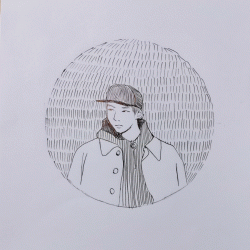11/11/2020
A great writer thinks not only of what the character would do and feel, but what they want the audience to feel
In the lecture on narrative structure, I learned the differences between a feature film, a short film, and short form content with regards to the different elements and difficulties each type of film comes with.
When told that the main aim of any film is to elicit an emotional response, I began thinking back to all the writing and storytelling I had done in the past and how much of that aspect I took into consideration when writing stories.
I realised that a lot of the lecture’s content are what we as viewers already knew perhaps subconsciously, but here it was pointed out and listed into categories which I found very useful. It made writing a film making something more tangible with a certain structure as a guideline instead of a secret abstract work process that was dependent on the writer’s talent. It was also very interesting to see the types of villains or plot points listed out and finding how many films fitted these categories despite how different they were.
As the assignment for this project is to create short form content that is only 40 seconds, I was very worried as I had always been one to go over the time limit. But when given the plot points and film elements that were vital for short form content, I felt a bit more reassured.
Though my ideas are still developing, I had begun thinking of possible storylines that follow the guidelines of short form content which will hopefully become more refined as my ideas become clearer.
What I have currently are rough ideas and quite similar to one another, though hopefully that will change as I begin to gather more ideas and have a more resolved concept.
Possible storylines so far include:
- The character is stuck in an Ecsher-esque environment with stairs and hallways going into different directions and has to find their way home, encountering rooms with tigers and dogs and bubbly outdoor scenery before discovering that they are protected by glass walls. The character feels relieved at first before realising that they also can’t get out of the glass room they’re in.
- A character is confined in a small square room living their life day-to-day reading, watching TV shows, washing their hands, playing with a dog standing outside the room, eating with utensils that are wrapped in plastic, washing their hands, playing video games, and washing their hands. The cycle becomes so repetitive that everything begins to morph together and they start to go insane before a door is opened by another character, who invites them into a slightly bigger square room with a few more people inside.
- A character is confined in a small square room with a small hatchet that served food wrapped in plastic. The room is bare and clean and sterilized, with one small window that shows a scenery of a forest. The character sits around all day and feels themself going insane, banging on the walls before one day a door opens and they step out just to realise that the scenery they’ve been looking at is a painting of a forest.
LOGLINE: Tai is stuck inside a small square room with one small window as he begins to go insane.
SYNOPSIS: Stuck inside, Tai is left sitting inside a room where he’s served sterilized meals and watches TV. There is one small window in the room where a clear blue sky can be seen. Days past with the routine repeating itself over and over and Tai grows agitated, trying to find a way out though it’s to no avail. Boredom and stress begin to eat at him as he hears every single sound from the TV play at once and he trashes the room until he faints. When he wakes up, an open door suddenly appears and he desperately sprints out to find a larger room, with a painting of the sky set up in front of the window.
I’ve created a mood board for the environment and crucial moments in the story, keeping in mind how I want the audience to feel at each point and what the character will go through.

